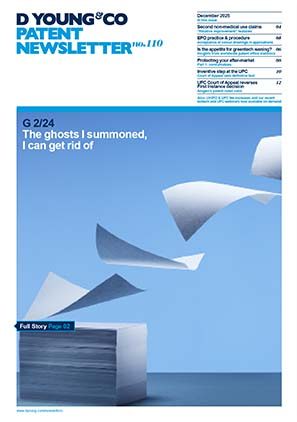Defining FRAND terms - end of the beginning?
As we have previously reported (see related articles for links), last year the High Court of England & Wales handed down a judgment in Unwired Planet v Huawei, which determined the terms of a licence for Unwired Planet’s Standard Essential Patents (SEPs) relating to mobile communication technologies on fair reasonable and non-discriminatory (FRAND) terms. That was, at the time, a ground-breaking decision. It is perhaps not surprising that now a court on the other side of the pond in the central district of California has also handed down a judgment settling a licence on FRAND terms between an owner of SEPs, Ericsson, and a manufacturer of mobile communications technology, TCL Communications.
In both the Unwired Planet decision and the decision in TCL v Ericsson, the patents related to 2G, 3G and 4G technologies.
The issue before the court for the TCL v Ericsson in the central district of California was the same as that in the Unwired Planet decision. Namely, given that at least some of the SEPs owned by patent holder are valid and infringed, what should be the royalty rate for licensing the whole of the patent holder’s portfolio to a third party?
In an approach which was consistent with that in the Unwired Planet decision, the court in TCL v Ericsson first applied a “top down” approach, in which it arrived at a realistic estimate of the number of SEPs held by Ericsson and then, after including some weighting factors, determined the number of SEPs attributable to all patent holders in respect of each of the standards concerned.
The top down approach has, as its starting point, an assumption that all SEPs meeting basic objective criteria (such as validity) have equal value. Attempts in the present case by TCL to counter this assumption, based on counting contributions to the 3GPP working groups, an assertion that the top 10% of patents account for 65% of the value, and a forward citation analysis, were all unsuccessful. Ericsson’s submissions of survey evidence on the economic value to consumers of various features and a comparison of Ericsson’s SEPs against the next-best technical alternative were similarly rejected by the court.
The case clearly demonstrates that a party which attempts to assign an individual value to a given SEP faces numerous challenges:
- any valuation assessment must be fairly applied to not only the patentee’s portfolio, but also to the larger comparative set
- the evidence must support both a qualitative and (more challenging) quantitative difference in the valuation of one patent compared with any other.
The court therefore favoured the top down approach and followed a similar approach to that applied by the court in the Unwired Planet decision.
Part of the reason for rejection of Ericsson’s approach was the court’s view of public statements made by Ericsson before the start of the standardisation process in 2002.
Ericsson’s own public statements indicated that it and other SEP holders believed that the total royalty burden applicable to a standard was 5% of sales for 3G and 6% to 10% for 4G SEPs and that they intended to apportion each SEP owner’s share of that total royalty burden in proportion to the number of SEPs owned by each individual patent owner. This was regarded as an affirmation of the top down approach.
The court then used a comparable licence approach to confirm the validity of the royalty rate arrived at from the top down approach. In doing so the court unpacked comparable licences with other parties. Although this was a complicated task based on the different terms, such as advanced royalty payments, and the expiration of patents, the submissions of the two parties were “reasonably congruent” with the assessment of the court.
The court in TCL v Ericsson also affirmed the approach taken by the UK court in the Unwired Planet decision by directing that Ericsson should award a global licence beyond the US, although providing a lower royalty rate outside the US jurisdiction because of the relatively smaller number of patents Ericsson held outside the US in each of the patent families concerned.
Earlier in the dispute Ericsson had made two licence offers to TCL, and part of the dispute which had resulted in the proceedings before the US District Court for the Central District of California was that TCL considered that the offers made by Ericsson were not on FRAND terms. The court ultimately considered that the royalty rates under FRAND terms were much lower than those originally offered by Ericsson and so the earlier licence offers by Ericsson were not FRAND. However the court did not conclude that Ericsson had acted in bad faith because, in a similar approach to the court in the Unwired Planet decision, making an offer which was not ultimately determined to be on FRAND terms was not considered in itself to be anti-competitive.
Are we starting to see the beginning of a convergence on the terms for FRAND licences?
Some commentators have indicated that the judgment in TCL versus Ericsson was not favourable to holders of SEPs, although this still represents a good business model for those contributing to a technology of a particular standard. There may therefore be considerably more to come in terms of judgments determining what a FRAND licence looks like and indeed certainly more academic commentary.
In a rather proactive approach, and without waiting for a dispute to appear before the Japanese courts, the Japanese Patent Office issued a “Guide to Licensing Negotiations Involving Standard-Essential Patents (draft)” on 09 March 2018. The guide includes recommendation on conditions for establishing FRAND terms for a licence and for negotiating in good faith and can be viewed online via this link: https://www.jpo.go.jp/support/general/sep_portal/document/index/guide-seps-en.pdf.
This no doubt will be a valuable contribution in the global development to establish the terms for FRAND licences and so perhaps we are rather at the end of the beginning of a process which establishes a world view on FRAND terms for licensing SEPs.

